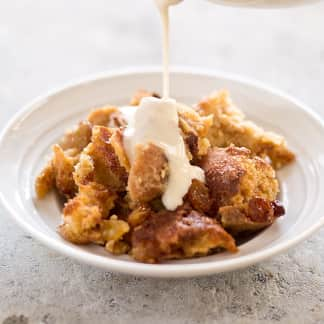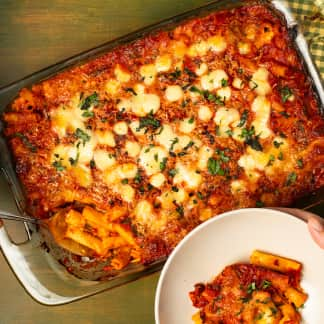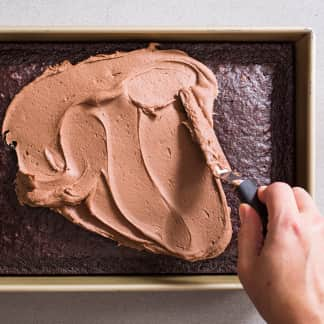The best broiler-safe baking dishes hold and cook casseroles and other baked dishes well and have large looped handles that are easy to grip. Our favorite is the model included in the Staub 3-piece Rectangular Baker Set. Most days, this set of three dishes costs the same as many of the standalone baking dishes we’ve tested—and it provides you with two additional baking dishes in useful sizes to boot. If the set’s price rises above $100, however, you might consider one of our other highly recommended options, including the HIC Lasagna Pan with Handles.
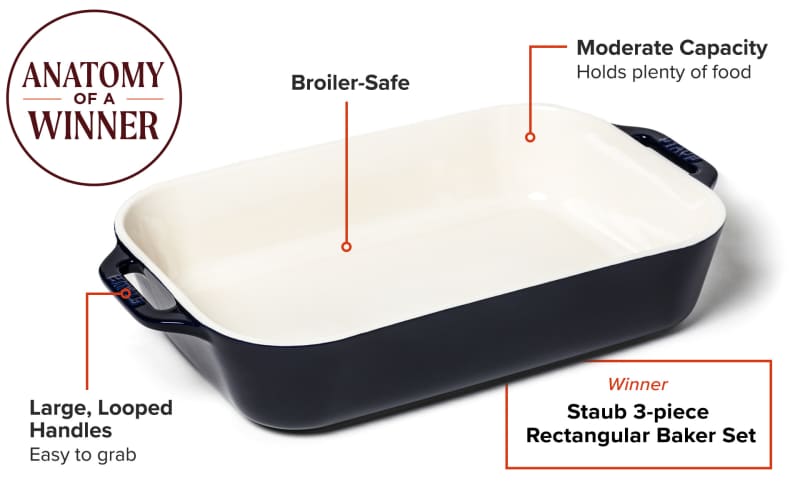
We love glass baking dishes for cooking many of our most basic casseroles. But glass baking dishes generally aren’t safe to use at temperatures above 550 degrees or directly under the broiler; they can shatter. Our favorite rectangular metal baking pans can’t take the heat either—they have nonstick coatings that can deteriorate at high temperatures of 500 degrees or more.
So we turn to ceramic or stoneware baking dishes for recipes that require us to brown the top of foods, including Classic Macaroni and Cheese, Savory Noodle Kugel, Candied Sweet Potatoes, New Orleans Bourbon Bread Pudding, Oven-Barbecued Beef Brisket, and more. Ceramic baking dishes are almost always safe to use under the broiler (see “What to Look For” below.). And they have another advantage over glass and metal baking dishes. Dense, heavy ceramic has more thermal mass than the glass or metal baking dishes we recommend. That means that while ceramic dishes take longer to heat up, they do a superior job of retaining that heat. As a result, your casserole stays warmer longer—a big benefit for long-running potlucks and dinners that get delayed.
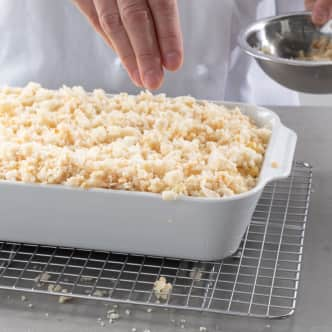

In deeper, wider pans, food sat lower in the dish. In smaller pans, food sometimes spilled out (left). The best dishes were mid-size, from 14¼ to 16¼ cups in capacity, roomy enough to fit full recipes without spillage, but not so big that their contents looked skimpy.
What to Look For
- Moderate Capacity: While all the models we tested measured about 13 by 9 by 2.5 inches, the exact dimensions varied somewhat from model to model. As a result, the capacity of the dishes did, too; models held from 12 to 17 cups. All the models were perfectly capable of holding and cooking casseroles such as our Classic Macaroni and Cheese. But predictably, those casseroles got mounded a bit higher in models with the smallest capacities and sat a bit lower and flatter in models with the largest ones. The same was true when we baked yellow cake in each model—something you might do in a pinch if you lack a metal baking pan. The smallest models made thicker cakes and required a bit more time to bake. The biggest models made thinner ones and baked a bit faster. While there’s nothing wrong with a larger or smaller baking dish, we generally preferred models with a capacity toward the middle of the range, holding 14 to 16.5 cups; these were roomy enough to fit full recipes without spillage but not so big that their contents looked skimpy.

- Large, Looped Handles: The handles on ceramic baking dishes come in two basic styles. Looped handles are shaped like a squared-off C with space for your fingers in the middle. Tabbed handles resemble the tabs you’d see on top of a manila folder. We much preferred looped handles, which allowed us to grab the pan securely even when our hands were swathed in oven mitts or potholders. And the bigger the handle, the easier it was for us to grab: handles measuring at least 3 inches across and jutting out at least an inch from the dish itself were best. Tabbed handles were often smaller and attached to the dishes at an angle, which made them harder to get a grip on.


We preferred baking dishes with large looped handles (left). These were easier to grab than tabbed handles (right), especially when we were wearing oven mitts.
- Broiler-Safe Designation: Some manufacturers place temperature limitations on their ceramic or stoneware goods to minimize the risk of damage. We confined our lineup to models that were clearly designated as broiler-safe by their manufacturers, but several other models that we considered testing had temperature limits of well below 500 degrees. If you’re in any doubt about whether your dish is suitable for use with a broiler, check our lineup or the manufacturer’s recommendations before use.
The Tests
- Bake a cake made with our winning boxed yellow cake mix and cut it into 24 squares with a paring knife
- Make Classic Macaroni and Cheese and portion and remove it from the dish with a metal spatula
- Make One-Pan Salmon with Rice, Broccoli, and Shiitake Mushrooms and portion and remove it from the baking dish with a metal spatula
- Wash each dish five times according to manufacturer instructions
- Place each dish in the oven and remove it from the oven, using both dish towels and oven mitts
How We Rated
- Performance: We rated the baking dishes on how well and evenly they cooked different types of food.
- Ease of Use: We evaluated the baking dishes on how easy they were to lift and maneuver.











 Buy at Great Jones
Buy at Great Jones








